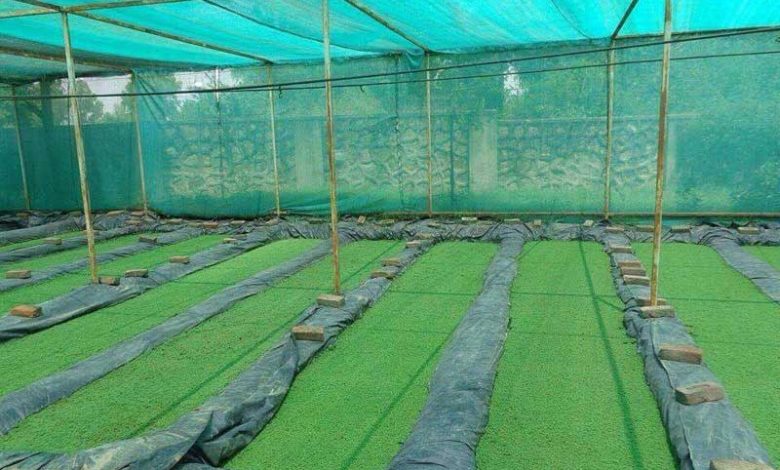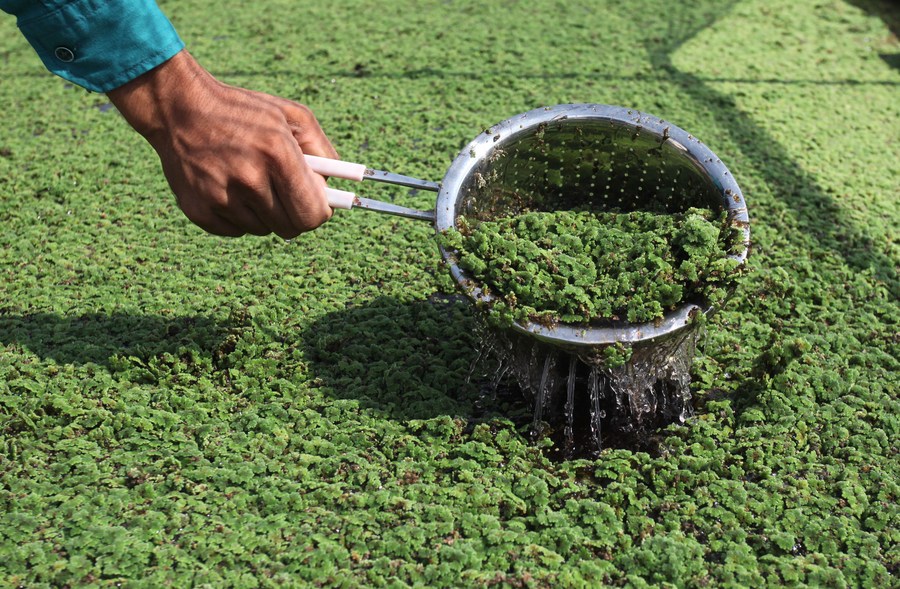Azolla, a tiny aquatic plant, has gained popularity in recent years due to its incredible growth potential and numerous benefits. Whether you are a seasoned gardener or a beginner, learning how to grow azolla can be a rewarding experience. In this guide, we will look into the optimal growing conditions, step-by-step instructions, fertilizers, harvesting techniques, and the overall maintenance of azolla.
Growing Conditions for Azolla
Azolla thrives in specific conditions that mimic its natural habitat. To successfully grow azolla, ensure you provide:
- Water Temperature: Azolla prefers temperatures between 15°C to 35°C (59°F to 95°F). It’s crucial to maintain a suitable water temperature for optimal growth.
- Light Exposure: Place your azolla in an area with indirect sunlight. Too much direct sunlight can inhibit growth, while insufficient light may lead to poor development.
- Water Quality: Azolla flourishes in clean, nutrient-rich water. Regularly monitor and maintain water quality to support healthy growth.
Steps on How to Grow Azolla
Growing azolla is a straightforward process. Follow these steps:
- Choose a Suitable tank: The size of your tank will depend on the quantity of azolla you want to harvest. For small holders, a tank or pond of 2m length and 1m width is suitable.
- Introduce plastic sheets: Cover your pond with durable plastic sheets and support with bricks at the edges. Plastic sheets will be necessary if you’re growing on a small scale or if you don’t have trampolines. In large scale, it is not entirely necessary.
- Introduce soil: Spread clean and fertile soil uniformly across your tank or pond. In small scale, about 25-50kg of soil will do the work.
- Introduce manure/fertilizer: A mixture of cow dung and rajphos/mussoorie phos will give your azolla plant the required nutrients needed for growth.
- Introduce water: Water should be introduced after the soil have been properly fertilized. Water should be maintained at a 10cm depth in the pond/tank.
- Introduce azolla: Azolla comes next after water and for every square meter of the pond/tank, 500g of azolla will fit in.
- Harvest: Azollas grow very fast and harvest can start after 8-14days from introduction.

Read also: How to grow kale in pots
Fertilizers for Azolla
Azolla requires essential nutrients for robust growth. Consider adding organic fertilizers rich in nitrogen to enhance productivity. However, be cautious not to over-fertilize, as it can lead to imbalances and affect the health of your azolla.
fertilizers to use can include; sodium nitrate, feather meal, blood meal, hoof & horn meal, hair, fish meal, crab meal, animal tankage, bat guano, soybean meal, cottonseed meal, fish emulsion, manure, & compost
Harvesting Azolla

Harvesting azolla is a delicate process to ensure continuous growth. Use a fine mesh net to skim the surface of the water, collecting the azolla gently. Harvest regularly but avoid removing more than half of the plant mass at once.
Harvest should also be done timely as late harvest can lead to overcrowding and reduced growth.
Benefits of Growing Azolla
Growing azolla comes with a plethora of benefits, including:
- Natural Fertilizer: Azolla is an excellent natural fertilizer, enriching the water with nitrogen and other essential nutrients.
- Livestock Feed: Azolla serves as a nutritious feed for livestock, providing a protein-rich supplement.
- Bioremediation: Azolla helps in cleaning and purifying water by absorbing pollutants and excess nutrients.
- Carbon Sequestration: Azolla absorbs carbon dioxide from the atmosphere during its growth, contributing to carbon sequestration and helping mitigate climate change.
- Low Water Requirement: Azolla requires minimal water to grow compared to traditional crops, making it an efficient and sustainable choice, especially in water-scarce regions.
- Weed Suppression: The dense mat of azolla on the water’s surface helps suppress the growth of unwanted aquatic weeds, reducing competition for resources.
- Aesthetic Appeal: Azolla adds aesthetic value to ponds and water features, creating a lush green carpet on the water surface.
- Disease Prevention: Azolla has natural compounds that may act as biopesticides, potentially helping in the prevention of certain diseases in crops and aquatic systems.
Maintenance of Azolla
To maintain a thriving azolla culture, follow these maintenance tips:
- Regular Inspections: Periodically check for pests, diseases, and any signs of stress in your azolla.
- Water Changes: Replace a portion of the water regularly to maintain nutrient levels and prevent stagnation.
- Temperature Control: Ensure the water temperature stays within the optimal range to support vigorous growth.
Read also: How to start seed indoors with grow light
The Bottom line
In conclusion, growing azolla can be a rewarding venture with the right knowledge and care. By providing suitable growing conditions, using the right fertilizers, and maintaining a consistent harvesting routine, you can enjoy the numerous benefits azolla brings to your garden and beyond.
FAQs
How Fast Does Azolla Reproduce?
Azolla is known for its rapid reproduction, doubling its biomass every few days under ideal conditions.
What is the Production Rate of Azolla?
Azolla has a high production rate, and in optimal conditions, it can cover the water surface within a few weeks, providing a sustainable source of biomass.
Why Is My Azolla Dying?
Common reasons for azolla decline include poor water quality, inadequate light, or imbalanced nutrient levels. Check and adjust these factors accordingly.
What Is the Shelf Life of Azolla?
Azolla has a short shelf life once harvested. It is best used fresh, but if stored in a cool, moist environment, it can last for a few days.
What Are the Limitations of Azolla?
While azolla offers numerous benefits, it may not be suitable for large-scale cultivation due to its specific growth requirements. Additionally, extreme temperatures and water stagnation can hinder its growth.

I want to grow plants which can be used in the poultry and goat farming as well.
there have to be a type of mixture.. cause birds don’t really feed like goats.. So pasture plants are a great start